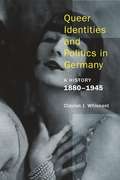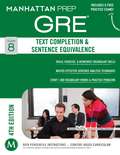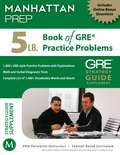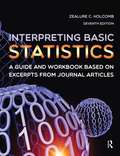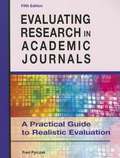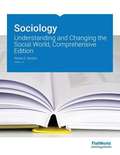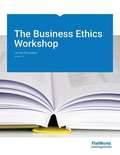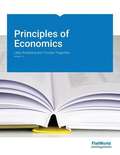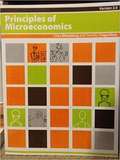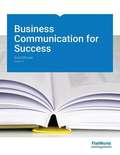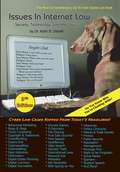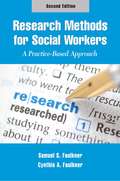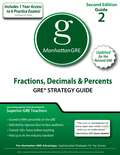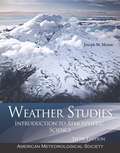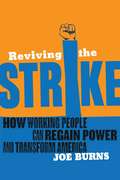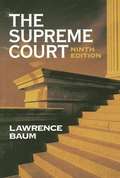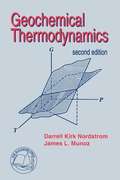- Table View
- List View
Queer Identities and Politics in Germany: A History, 1880–1945
by Clayton WhisnantGermany in the late nineteenth and early twentieth centuries witnessed key developments in LGBT history, including the growth of the world's first homosexual organizations and gay and lesbian magazines, as well as an influential community of German sexologists and psychoanalysts. Queer Identities and Politics in Germany describes these events in detail, from vibrant gay social scenes to the Nazi persecution that sent many LGBT people to concentration camps.Clayton J. Whisnant recounts the emergence of various queer identities in Germany from 1880 to 1945 and the political strategies pursued by early homosexual activists. Drawing on recent English and German-language scholarship, he enriches the debate over whether science contributed to social progress or persecution during this period, and he offers new information on the Nazis' preoccupation with homosexuality. The book's epilogue locates remnants of the pre-1945 era in Germany today.
Text Completion & Sentence Equivalence: GRE Strategy Guide (4th Edition)
by The Editors at the Manhattan GREThis book contains important strategies for tackling Text Completion & Sentence Equivalence questions and two brand-new question formats on the new GRE.
5 lb. Book of GRE Practice Problems: GRE Strategy Guide Supplement
by The Editors at the Manhattan PrepGRE success lies in consistent performance, which requires the deep familiarity with GRE questions that can only be gained with practice. This guide provides that practice.
Interpreting Basic Statistics: A Guide and Workbook Based on Excerpts from Journal Articles
by Zealure C. HolcombThis book presents brief excerpts from research journals representing a variety of fields, with an emphasis on the social and behavioral sciences. The questions that follow each excerpt allow students to practice interpreting published research results.
Evaluating Research in Academic Journals (5th Edition)
by Fred PyrczakWhen students in the social and behavioral sciences take advanced courses in their major field of study, they are often required to read and evaluate original research reports published as articles in academic journals. This book is designed as a guide for students who are first learning how to engage in this process.
The Legal and Ethical Environment of Business
by Terence Lau Lisa JohnsonTerence Lau & Lisa Johnson's The Legal and Ethical Environment of Business is a book for today's student, who expects learning to be comprised not only of substance, but also of interactive exercises and multimedia. This book streamlines the presentation of material to ensure that every page is relevant, engaging, and interesting to undergraduate business students, without losing the depth of coverage that they need to be successful in their academic journeys and in their professional careers. This is not Legal Environment of Business (LEB) "light." Rather, this is LEB without risk of students' eyes glazing over in boredom or from lack of comprehension. This is LEB presented in an exciting way, where every page is interesting to students and relevant to real life.
College Success
by Bruce Beiderwell Linda Tse Thomas J. Lochhaas Nicholas B. DekanterCollege Success takes a fresh look at what it means, in today's world, with today's students, to be successful in college. Although many of the topics included--from study skills to personal health, from test-taking to managing time and money--will look familiar to those who have used student success texts that have been around for many editions, College Success takes a new approach. The focus is on realistic, practical tools for the students who need them. This is a book designed, frankly, for students who may have difficulty with traditional college texts. The style is direct and to the point. Information is presented concisely and as simply as possible. This is not a weighty tome that discusses student success--this is a manual for doing it. College student demographics have changed considerably in recent decades. More than a third of all students enroll not directly from high school but after a delay of some years. More students are working and have families. More students come from varied ethnic and cultural backgrounds. More students are the first in their family to attend college. More students have grown up with electronic media and now read and think in ways different from the previous generation. With these and so many other cultural changes, more students are not well prepared for a college education with the study skills and life skills they need to become successful students. For each student to get the most out of College Success and their college experience they must understand who they are as it relates to college. To that end, in every chapter students explore themselves, because success starts with recognizing your own strengths and weaknesses. Students make their own goals based on this self-assessment, determining what success in college really means for them as individuals. Interactive activities then help students learn the choices available to them and the possibilities for improving their skills. Skills are presented in step-by-step processes, tips for success in manageable highlighted displays. Most important, students always see the value of what they are reading--and how they can begin to apply it immediately in their own lives. College Success is intended for use in Freshmen Orientation, Study Skills or Student Success courses. A 2009 study revealed that currently nationwide, 34% of college freshmen do not return to their college for their sophomore year. This book is designed to help change that.
Sociology: Understanding and Changing the Social World
by Steven E. BarkanThe founders of sociology in the United States wanted to make a difference. A central aim of the sociologists of the Chicago school was to use sociological knowledge to achieve social reform. A related aim of sociologists like Jane Addams, W.E.B. DuBois, and Ida B. Wells-Barnett and others since was to use sociological knowledge to understand and alleviate gender, racial, and class inequality. It is no accident that many sociology instructors and students are first drawn to sociology because they want to learn a body of knowledge that could help them make a difference in the world at large. Steve Barkan's Sociology: Understanding and Changing the Social World is designed for this audience. It presents a sociological understanding of society but also a sociological perspective on how to change society, while maintaining the structure and contents of the best mainstream texts.
Introduction to Psychology
by Charles StangorWhen you teach Introduction to Psychology, do you find it difficult -- much harder than teaching classes in statistics or research methods? Do you easily give a lecture on the sympathetic nervous system, a lecture on Piaget, and a lecture on social cognition, but struggle with linking these topics together for the student? Do you feel like you are presenting a laundry list of research findings rather than an integrated set of principles and knowledge? Have you wondered how to ensure your course is relevant to your students? If so, then you have something in common with Charles Stangor. Charles Stangor's Introduction to Psychology utilizes the dual theme of behavior and empiricism to make psychology relevant to intro students. Charles wrote this book to help students organize their thinking about psychology at a conceptual level. Five or ten years from now, he does not expect his students to remember the details of most of what he teaches them.
The Business Ethics Workshop v 1.0
by James BrusseauOn a good day in the business ethics classroom discussion charges forward; students have read the assigned case study, they're engaged by the conflict and want to work through it. Then, there's a bad day: students didn't bother to do the reading and the hour sags listlessly. The key to going the first way is case studies that students want to read, and The Business Ethics Workshop by James Brusseau provides them with reality and engagement. Reality: No stilted and contrived stories about Steve Smith and Jane Jones. Excerpts from blogs and newspapers bring the weight--and provocation--of the world as it's actually happening to the classroom.
Sustainability, Innovation, and Entrepreneurship
by Andrea LarsonThis book is suited for the Entrepreneurship or Innovation course with an emphasis on Sustainability or for a course devoted entirely to Sustainability. The deep roots of sustainability thinking are now evident in widespread and increasingly visible activities worldwide, this text will help you and your students explore that necessity, its implications and its progression.
Principles of Economics v 1.1
by Libby Rittenberg Timothy TregarthenVersion 1.1 boasts improved coverage throughout the text including significant updates to: Chapters 20 (GDP, Price Level Changes, Business Cycles, and Unemployment) Chapter 21 (Measuring Total Output and Income) Chapter 27 (Government and Fiscal Policy) Chapter 32 (Macroeconomics for the 21st Century).
Principles of Microeconomics 2.0
by Libby Rittenberg Timothy TregarthenFlat World Knowledge is honored to publish Version 2.0 (an orginal re-launch) of Tim Tregarthen's wonderful principles of microeconomics book, and proud to bring Tim's incredible talents as a teacher back to life so future generations of students can continue to learn from him.
Business Communication for Success
by Scott McleanThis book is suited for Business Communication courses, but is also appropriate for Business English, Business Presentation, Professional Communication courses. Scott McLean brings his authoring expertise to this new communications textbook. Scott has authored textbooks in the areas of Speech Communication, Interpersonal Communication and Public Speaking. Business Communications for Success benefits from Scott's extensive understanding of how students learn the art of effective communication. Students are provided ample opportunity to engage with the concepts, vocabulary and models covered in the text, including role-playing exercises, journal writings, case studies, small-group activities, games, and self-assessment activities.
The Power of Selling
by Kim RichmondThe Power of Selling is the perfect textbook to teach students about the proven process of selling. More important, it teaches students how to apply the tenets of selling to how to sell themselves and get the job they want, with the same process professional sales people learn (or brush up) on their own selling skills. What makes someone successful in sales? Are great sales people born or made? Is there one magic selling process, or does the process change based on the business...or the customer? How can the selling process really come alive for students in the classroom? How do students learn how to sell for life, not just for a course? The Power of Selling by Kim Richmond answers these questions and makes the principles of selling come alive. Kim looks at the topic of selling through a different lens, and provides inspiration and ideas. The Power of Selling provides an exciting and interactive experience for both professors and students through the use of 4 unique elements: 1. Content The content is based on the core selling tenets so instructors will find the familiar principles of selling. In addition, the impact of Sales 2.0 is addressed at every stage including how to use interactive tools such as Twitter, LinkedIn, Facebook, blogs, and wikis effectively. 2. Selling U The last section of each chapter is called Selling U. It applies the concepts covered in the chapter to a student's job search. Selling U topics include how to think about yourself as a brand, how to create a powerful cover letter and resume, how to create your personal elevator pitch, how to use networking and informational interviews to get the word out about your brand, how to prepare and dress for an interview, and how to negotiate and accept the right job offer. What makes The Power of Selling different is that Selling U is integrated into every chapter, which makes this text the ultimate guide to selling yourself. 3. Video Resources Videos are used throughout the book. Additional videos that are not included in the text are available for instructor use. Here are videos that are available: * Video Ride-alongs - One of the best ways to learn about sales is by going on ride-alongs. So every chapter starts with an exclusive feature called a Video Ride-along. These short videos feature seven different sales professionals - one that starts each chapter. Each one talks about how he or she applies one of the key concepts covered in the chapter in their job. These videos are designed to be "virtual ride-alongs" so the students can actually feel as though they are getting insights first hand from selling professionals. * The Power of Selling YouTube Channel here (youtube.com/thepowerofselling) - Over 50 videos are included featuring the sales professionals who are highlighted in the Video Ride-alongs. About half of the videos are used in the textbook. The balance are available for instructor use. Several are included in Video Learning Segments (see below). These videos are excellent resources for use in the classroom, exercises, and assignments. * Video Learning Segments In addition to the traditional supplements of Instructor Manual, PowerPoints, and Test Bank, there are also Video Learning Segments. These are PowerPoint slides embedded with videos designed to supplement the course PowerPoints and focus on one concept, like an ethical dilemma, pre-call preparation, or effective presentations, how to use email effectively. Each segment includes slides, videos, discussion questions, or exercises. 4. The Power of Selling LinkedIn Group. here This group was created on LinkedIn.com expressly as a resource for the faculty and students who use this textbook. The group includes sales professionals from across the country and from different industries. This is a great tool for faculty and students alike to network, participate in discussions, ask questions, and connect with "real world" selling professionals.
Issues in Internet Law: Society, Technology, and the Law (Ninth Edition)
by Keith B. DarrellThis book provides a concise overview of Internet law updated with the latest cases and trends.
Research Methods for Social Workers: A Practice Based Approach (Second Edition)
by Samuel S. Faulkner Cynthia A. FaulknerSamuel and Cynthia Faulkner have developed the perfect research methods text tailored specifically for social work students that illustrates how understanding research is valuable for success in evidence-based agency practice. From the basics of research to practice evaluation, the authors carefully guide students through the complete process. They are able to connect abstract theory with practical applications, providing the skills necessary to become effective practitioners. The book introduces complex concepts such as qualitative, quantitative, and statistical methods; ethical issues in research; sampling; and measurement in a manner that students find readily accessible. What is most impressive about this new edition is that there is an additional 30% of new or updated material. Developed in part from suggestions made by students and faculty who have used the previous edition, these improvements include content and instructional features that will remind you why this is one of the best research methods books on the market! Features: NEW CSWE Core Competencies at the beginning of each chapter. NEW Practice exam at the end of each chapter. NEW! Case scenarios in each chapter demonstrating practical use of material along with associated critical thinking questions. NEW! Survey research chapter illustrating how to develop and conduct survey instruments. NEW! Example research proposal and example research report demonstrating how research is effectively gathered, processed, and presented. NEW! Examples throughout the text relating to social work practice.
Sequel: A Handbook for the Critical Analysis of Literature
by Elizabeth Schmuhl Richard C. Guches Meredith Mayberry Jill PeekTextbook for the study and analysis of poetry, fiction, and drama
Fractions, Decimals & Percents: GRE Math Preparation Guide
by The Editors at the Manhattan GREThis book provides an in-depth look at the array of GRE questions that test knowledge of Fractions, Decimals, and Percents. Learn to see the connections among these part-whole relationships and practice implementing strategic shortcuts.
Weather Studies: Introduction to Atmospheric Science (Fifth Edition)
by Joseph M. Moran"The American Meteorological Society (AMS), founded in 1919, is a scientific and professional society. Interdisciplinary in its scope, the Society actively promotes the development and dissemination of information on the atmospheric and related oceanic and hydrologic sciences. AMS has more than 14,000 professional members from more than 100 countries and over 175 corporate and institutional members representing 40 countries. The Education Program is the initiative of the American Meteorological Society fostering the teaching of the atmospheric and related oceanic and hydrologic sciences at the precollege level and in community college, college and university programs. It is a unique partnership between scientists and educators at all levels with the ultimate goals of (1) attracting young people to further studies in science, mathematics and technology, and (2) promoting public scientific literacy. This is done via the development and dissemination of scientifically authentic, up-to-date, and instructionally sound learning and resource materials for teachers and students. AMS Weather Studies, a component of the AMS education initiative since 1999, is an introductory undergraduate meteorology course offered partially via the Internet in partnership with college and university faculty. AMS Weather Studies provides students with a comprehensive study of the principles of meteorology while simultaneously providing classroom and laboratory applications focused on current weather situations. It provides real experiences demonstrating the value of computers and electronic access to time-sensitive data and information. "
Reviving the Strike: How Working People Can Regain Power and Transform America
by Joe BurnsIn Reviving the Strike, Joe Burns draws on economics, history and current analysis in arguing that the labor movement must redevelop an effective strike based on the now outlawed traditional labor tactics of stopping production and workplace-based solidarity.
The Supreme Court (9th edition)
by Lawrence BaumBaum (political science, Ohio State U.) presents a short guide for readers who know a lot or a little about the highest court in the US. No dates are noted for earlier editions; this one reflects new scholarship and developments such as the Bush v. Gore case and its repercussions. Cited in Books for College Libraries, 3d. ed. Annotation ©2004 Book News, Inc., Portland, OR (booknews.com)
Setting Up Your Shots: Great Camera Moves Every Filmmaker Should Know
by Jeremy Vineyard Jose CruzIf you are an aspiring filmmaker, this book is an ideal first choice to begin your studies. You can browse through the pages in any order, discovering new cinematic techniques. You can use these techniques in your own short films, watch the movies listed to see how the professionals use them, and expand the domain of your filmmaking knowledge.
Geochemical Thermodynamics
by Darrell Kirk Nordstron James L. MunozGeochemical Thermodynamics (Second Edition), first published in 1994, takes the reader beyond the fundamental principles of thermodynamics to true geochemical applications. You will find the most complete coverage of the phase rule, chemography, solid solutions, ionic activities in the mixed aqueous electrolytes, and chemical potential diagrams for multiphase systems, plus other concepts central to geochemical theory. Throughout, there is an emphasis on environmentally relevant examples and applications. New sections include: - thermobarometry applications for igneous and metamorphic rocks; -expanding information on electrolytes at high temperature and pressure; - a new chapter on geochemical modeling; and substantially updated and expanded references. - a new appendix containing internally consistent enthalpies, entropies, heat capacities, and free energies, and equilibrium constants for a limited number of elements, ions, non-silicate minerals, and reactions at 298. 15K and 1 atmosphere that are particularly useful for hydrogeochemical modeling. 'This book presents the thermodynamics of geochemical systems, with applications ranging from groundwater to magmas. It should be of interest to a large number of such scientists wishing better acquaintance with the application of thermodynamics to practical problems. Geology There is a good balance of theory and application, and the book is superior to any other available text at the graduate or undergraduate level I can strongly recommend this book, having used it for a third-year undergraduate geochemistry course. It is most appropriate for physical geochemistry course with an emphases on thermodynamics. Researchers in petrology oriented fields will also find the book useful Canadian Mineralogist
The Structure of English for Readers, Writers, and Teachers (2nd Edition)
by Mary M. ClarkThe Structure of English for Readers, Writers, and Teachers offers an up-to-date survey of the grammar of English (our pronunciation, our spelling system, our vocabulary, and the structure of our words, phrases, and sentences) with applications for writers, teachers of language arts, and students of literature.
